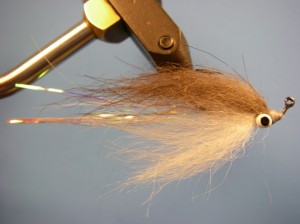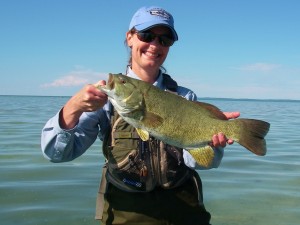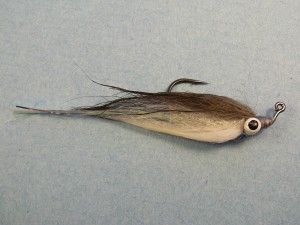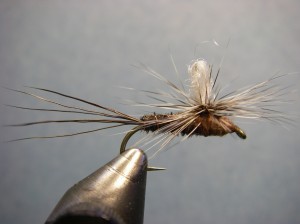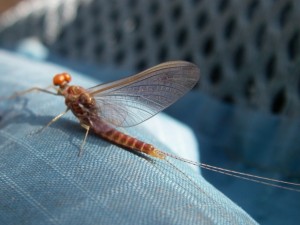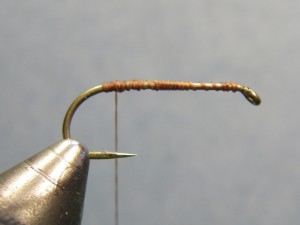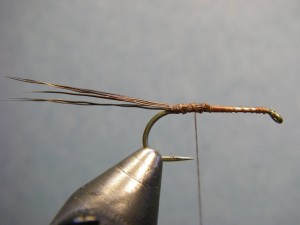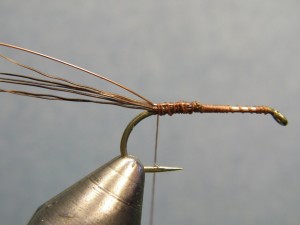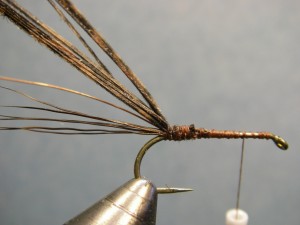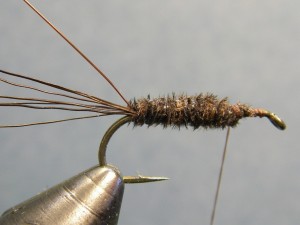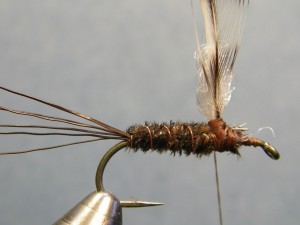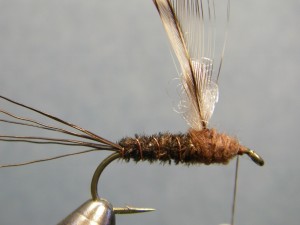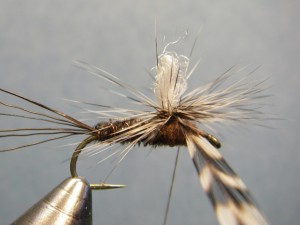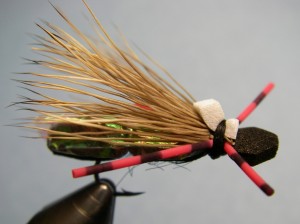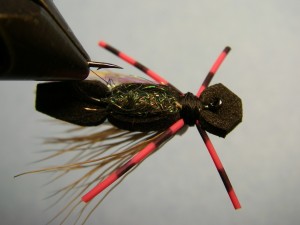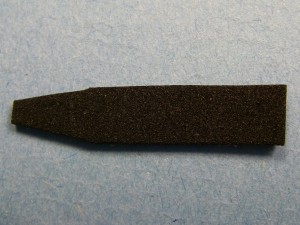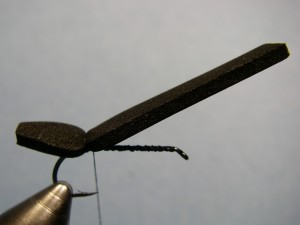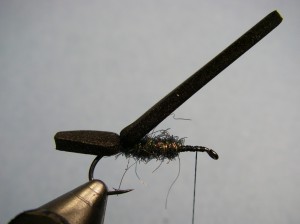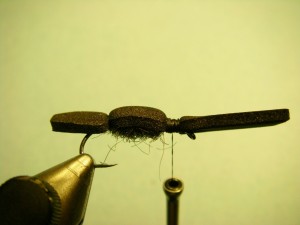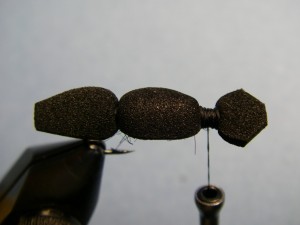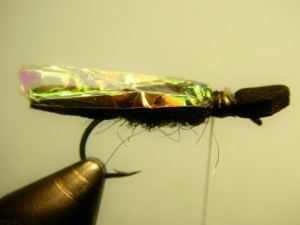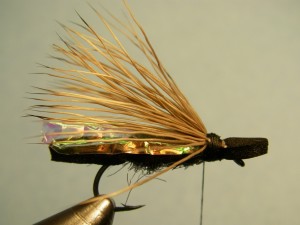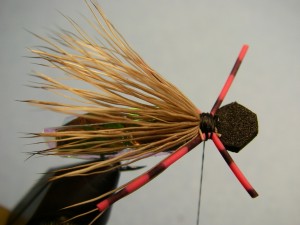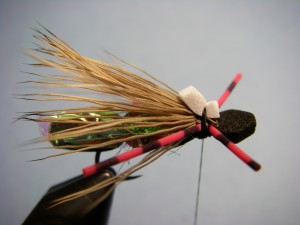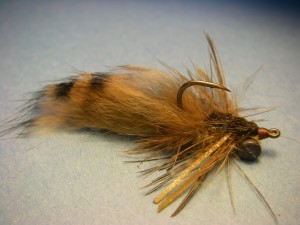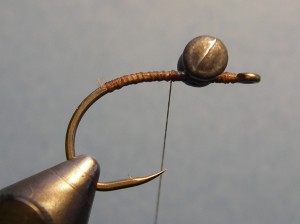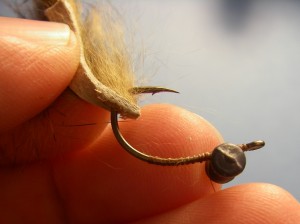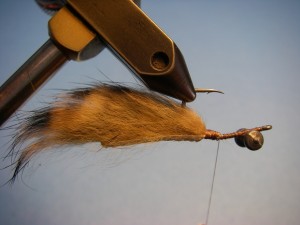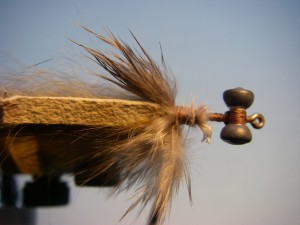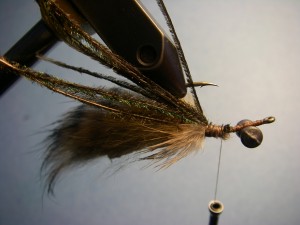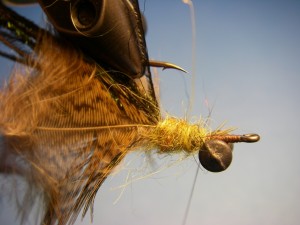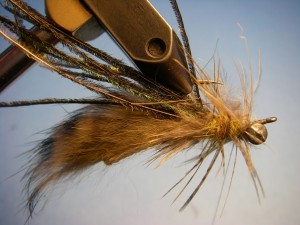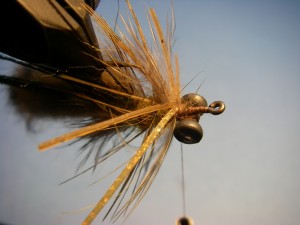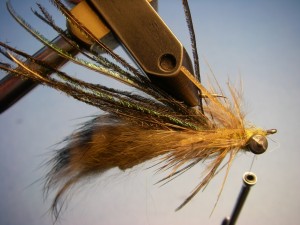Most anglers are familiar with the Clouser Minnow — a highly effective fly created by smallmouth bass angler and guru Bob Clouser. With its lead eyes and streamlined bucktail construction, the fly acts similar to a bucktail jig and can effectively be fished in a variety of colors for a variety of species, making it one of the most versatile patterns for both fresh and saltwater fish.
The Flashtail Clouser was influenced by the original Clouser Minnow pattern and Dan Blanton’s rendition — the Flashtail Deep Minnow. Notable differences in this pattern include a tail of reflective Flashabou, a body of synthetic dubbing to add some bulk and transparency, and a belly and wing made from soft, natural materials that have more movement in the water. The result is more durable than bucktail.
You can fish the Flashtail Clouser in both rivers and lakes with both floating lines and sink-tips. I suggest tying these flies using various sized eyes from bead-chain to a few different sizes of painted dumbbell to allow fishing various depths and current flows.
With floating lines, use leaders around 9 feet in length to allow the fly to sink. When stripped, the jig-style hook and a floating line create a fleeing “hop” while moving forward, imitating a spooked and fleeing baitfish — something predatory fish often key-in on.
Fish this pattern with varying speeds and pauses on sink-tip lines when you need to get the fly deeper and/or in swift moving currents.
Easy to tie, highly effective and very versatile, tie this pattern in sizes that range from a few inches up to 8 inches in length. You can change the color profile to match any particular baitfish that is prevalent to your favorite fishery or even in attractor color schemes.
Trout • Pike • Salmon • Smallmouth Bass • Bluegill • Largemouth Bass • Walleye • Steelhead
Flashtail Clouser Minnow Recipe
Hook: U555 Jig 6, or TFS 5440 1/0 – 6
Thread: Gray Uni 6/0
Tail: 50/50 mix of Mirage Opal/silver and Flashabou Pearl
Body: Hareline Polar Dub – White
Eyes: S.S. Bead Chain or painted dumbbell – sized accordingly
Belly: Sheep Hair/Sculpin Wool – White
Wing: Silver Fox Tail
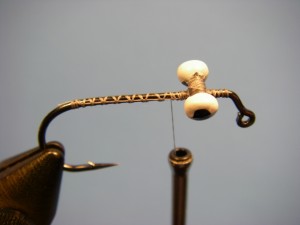 Step 1. After wrapping a base layer of thread from behind the angled hook shank to above
Step 1. After wrapping a base layer of thread from behind the angled hook shank to above
the hook barb, tie eyes using figure-8 wraps, leaving room to tie in the belly and wing.
Some people prefer to add a drop of Zap-A-Gap to the wraps at this point (optional).
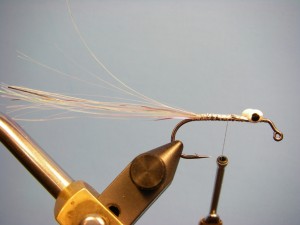 Step 2. Tie in the tail material so it extends backwards twice the length of the hook shank.
Step 2. Tie in the tail material so it extends backwards twice the length of the hook shank.
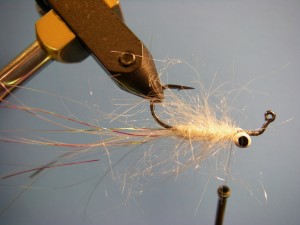 Step 3. Very loosely dub clumps of Polar Dub from the tail tie in area to just
Step 3. Very loosely dub clumps of Polar Dub from the tail tie in area to just
behind the eyes. Pick out with scissor point or bodkin.
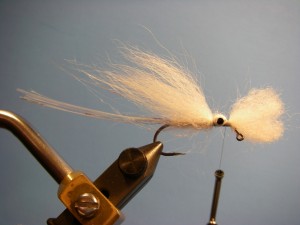
Step 4. Tie in a sparse clump of sheep hair behind the eyes so the tips extend halfway down the tail.
After secure, wind your thread between the eye and hook eye. Pull sheep hair over the eyes and tie down.
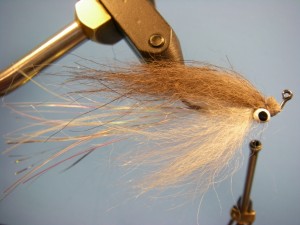
Step 5. On the opposite side of the white belly hair, tie in a clump of Silver Fox tail for
a wing that is slightly longer than the belly. Trim, tie off and apply two coats of head cement.

